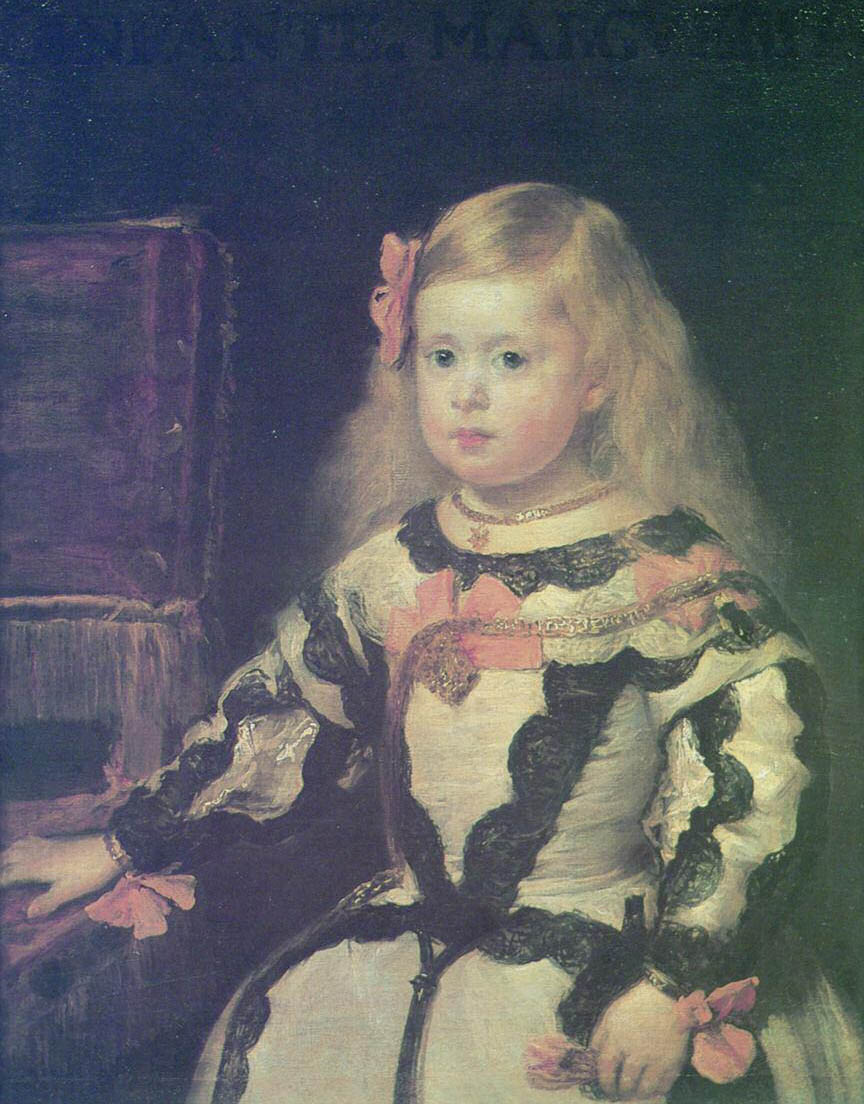MANET'S LOST INFANTAALBERT BOIME, & ALEXANDER KOSSOLAPOV
1 INTRODUCTIONThe subject of this study is an oil painting, 46.0 � 38.1 cm (fig. 1, see page 442), a fragmentary and unsigned copy of Vel�zquez's familiar Infanta Maria Margarita (fig. 2, see page 442), which has been widely admired since its arrival in the Louvre in 1816. The provenance of this painting is obscure prior to 1967, when an American lawyer briefly working in Amsterdam bought it and three other paintings from a small basement gallery on the Rozengracht. The owner of the gallery initially identified the Infanta painting as a Diego Vel�zquez (1599–1660) in the “certificate” given to its purchaser at the time. He claimed to have discovered it years ago in Paris with its background “fully painted over” (Brainerd 1988, 73). He subsequently removed the overpainting.
In 1968–70 various professionals to whom this Infanta was shown unanimously recognized it as a copy after Vel�zquez, dating to approximately 1850–70. The chief conservator of the Art Institute of Chicago, Alfred Jakstas, for example (Brainerd 1988), concluded from a lengthy examination, with no techniques other than x-rays, binocular microscope, and visual analysis, that it could be dated unequivocally to “third quarter, 19th century.” Another conservation report, dated May 1970, found it was “probably painted in 19th century” and otherwise described its condition as follows:
It may be concluded from the conservators' reports that the state of preservation of the painting was rather poor and, what is more significant, that the paint stains and unprofessional repairs were well in line with the earlier statement of the owner of the Amsterdam gallery. On the back of the horizontal stretcher's crosspiece the word “Bertram” (or “Bertran”) is handwritten with a brushlike instrument. This inscription can scarcely be taken as an indication of authorship for two main reasons: First, the emission spectrum analysis (by Bernard Hauser of Spectro-Chemical Research Laboratories, Chicago, laboratory no. 23548, of November 20, 1970) shows that the inscription material differs from any black on the painting itself. The latter contains lead, while the former does not. This finding might be taken as a good indication of its not being oil color, but rather a type of ink (Brainerd 1988). Second, there are just two artists bearing the name Bertram(n) who are known in the second half of the nineteenth century: Abel Bertram, a French landscape artist born in 1871 (1871–1954), and Pablo Maria Beltran y Tintore, a lesser-known late-19th-century Spanish artist known mostly for his religious scenes in the Cathedral of Salamanca, who studied under Henri Gervex in Paris and exhibited his works in Madrid in 1892 and whose name was sometimes spelled “Bertan” (Thieme-Becker 1909; Saur 1995). Neither of those artists can reasonably be associated with the present Infanta other than as a prior owner or handler. Persistently rebuffed in his attempt to vindicate the relationship to Vel�zquez by a dating inconsistency that was undeniable, the lawyer displayed the painting to a number of professional persons knowledgeable on French art of the period. Inevitably, such studies turned toward the Spanish Revival period (1845–1865) and to one of its main exponents, �douard Manet (1832–1883). On June 18, 1970, one of the recognized �douard Manet historians in the United States, John Richardson, then with Christie's in New York and having seen the photographs of the Infanta with another Manet expert, Professor George Heard Hamilton, wrote a letter to the owner stating that “after examining at length … the various photographs of your Manet …, we both feel it would be rash to dismiss the possibility of its being an authentic early work” (quoted in Brainerd 1988, 95). Other Manet experts, some of whom Richardson had identified, were then consulted, and in a short time it became apparent that about 1860 Manet had in fact executed a copy of the Infanta that had been lost or thought destroyed long ago. One possible claimant for the lost work advanced by Jacques Mathey had long been challenged for its flaccid qualities and consequently was placed outside contention (fig. 3). While the art historians were uniformly receptive to at least the possibility of the present painting's being attributed to Manet, years passed and interest in it subsided, until 1977, when Anne Coffin Hanson included the painting in her seminal work, Manet and the ModernTradition, identifying it as the product of an unknown artist but nonetheless “probably the best contestant” for the lost Manet (Hanson 1977, 156 and fig. 99). |

